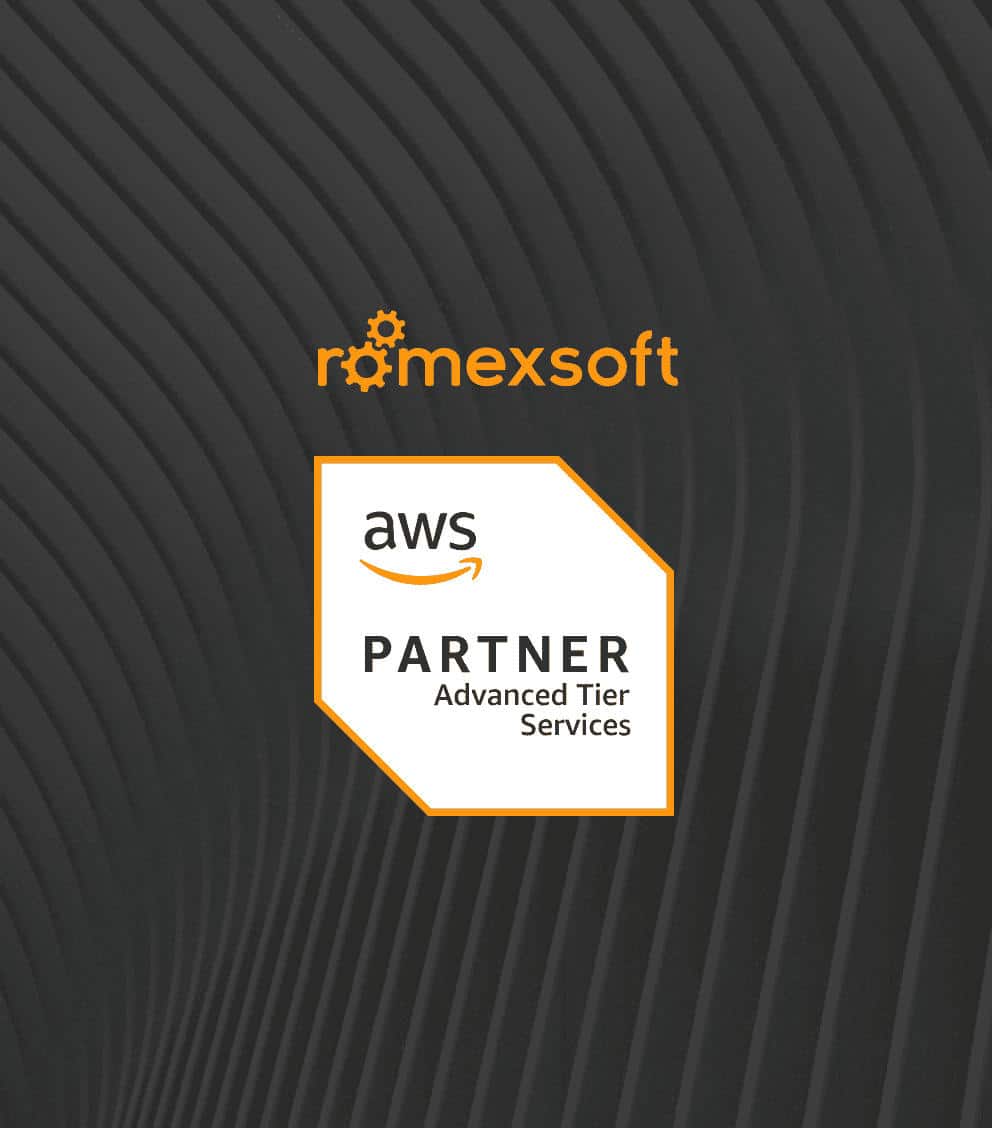On-premise to AWS Cloud Migration A Step-by-Step Guide
This article provides a detailed explanation of the steps that must be taken when migrating your on-premise system to the cloud environment on AWS. It explains the significance of each migration phase and how to prevent issues during it, as well as ensure long-term cost efficiency and performance.
The blog gives an overview of:
- key reasons to move from on-premises to AWS
- step-by-step AWS migration process
- common migration challenges and how to address them
- best practices for post-migration success
- AWS services and tools that can help during migration

Table of Contents
On-premise systems are often tied to hardware limitations and rising infrastructure costs. They are also high and expensive to upgrade, but modernization is essential to keep your business competitive. The solution is to migrate to the cloud, which is more cost-efficient, secure, flexible, and scalable. This guide will explain how to do this in a way that brings maximum value and minimizes risks.
Table of Contents
Why Companies Migrate from On-Premises Infrastructure to the AWS Cloud
Aging hardware, rising maintenance costs, and limited scalability are among the main reasons why on-premises environments are fast becoming uncompetitive and outdated. Migrating to AWS offers an alternative, scalable, flexible, and cost-efficient infrastructure that provides the following benefits:
- Eliminate Infrastructure and Licensing Overhead. Physical equipment, such as servers, and licensed software, is expensive to maintain and requires regular replacements to remain useful in the evolving tech era. Migrating to AWS allows you to significantly reduce these costs by switching to a usage-based model that dynamically right-sizes resources.
- Improve Resilience and Performance. Using on-premises infrastructure makes it challenging to establish effective disaster recovery practices and ensure optimal global performance. AWS offers a solution through multi-AZ deployments, load balancing, and automated scaling.
- Strengthen Security and Compliance. On-premises infrastructures are usually fragmented. Therefore, maintaining security throughout their elements is resource-intensive and expensive. With AWS, security systems, like identity management and data encryption, are centralized, much easier to manage, and keep updated. This also helps maintain compliance with GDPR, HIPAA, etc.
- Accelerate Delivery and Modernization. On-prem environments are inflexible and limit the overall system speed. Meanwhile, AWS relies on modern practices, such as CI/CD, serverless computing, and containers. Therefore, using the cloud allows your team to upgrade the system quickly without a complete rework, reducing downtime.
- Address End-of-Life Risk. All on-premise system environments eventually end up too outdated for upgrades and unsupported software, so they must be replaced entirely. However, cloud environments reduce this operational risk and streamline continuous system modernization.
On-Prem to AWS Migration Roadmap
The process of migrating to AWS requires thoughtful planning, cross-team coordination, and an understanding of how current systems map to AWS services. Using specialized automation tools, like AWS Application Migration Service (AWS MGN), facilitates this transition. However, these apps are only effective as part of a well-structured process.
When migrating an ecommerce platform, Romexsoft outlined specific steps for the multi-phase migration process. In that client’s case, both the servers and the database, including the development and production, ran on a single physical machine on-prem. Today, we use the steps listed below in similar projects for our clients, whether they require lift-and-shift, replatforming, or refactoring.
Discovery and Assessment
The initial phase must cover inventorying all workloads, assessing application dependencies, and gathering infrastructure requirements. It includes the following steps:
- Confirming ownership and documentation for all services
- Identifying compliance requirements (for example, PCI DSS, SOX, or PII)
- Gathering server-level details that include OS, configuration, IPs, storage, and licensing
- Completing discovery templates to capture security, middleware, networking, and infrastructure attributes
- Mapping workload interdependencies and tagging applications for future cost management
- Creating architecture diagrams that represent the current state and target AWS environment
- Checking server prerequisites for AWS Application Migration Service
- Grooming the pre-discovery backlog and planning discovery sprints based on it
Planning and Prioritization
To minimize disruptions and maximize the efficiency of migrating to AWS, workloads must be moved in parts. Planning is the stage when the AWS migration team groups workloads and separates migration into phases based on business risks, technical readiness, and resource availability. This stage includes:
- Defining migration waves and assigning workloads to rehost, replatform, or refactor tracks
- Determining production release windows and acceptable downtime per workload
- Setting up rollback procedures and escalation paths
- Finalizing the target compute environment based on current performance and workload needs
- Coordinating with InfoSec to translate firewall rules into AWS security group formats
- Aligning cross-functional teams on communication timelines, cutover planning, and fallback options
Virtual Networking and Migration Tooling
The next stage is to prepare the AWS environment by defining the right infrastructure and tools that match your business and technical requirements. Your AWS migration service provider will also need to select the most suitable strategy, such as lift-and-shift, replatforming, or refactoring. Key tasks for these processes include:
- Designing and provisioning the target Virtual Private Cloud (VPC), subnets, route tables, and security groups
- Defining IAM roles and policies to provide secure access for migration services and team members
- Choosing migration tools aligned with your workload type:
- AWS Application Migration Service (MGN) for automating the lift-and-shift of entire servers
- AWS Database Migration Service (DMS) for moving databases without downtime
- AWS Snow Family for large-scale offline data transfers
- ECS/EKS/CodePipeline for containerized or CI/CD-driven replatforming
- Custom scripts or IaC pipelines for full rebuilds or greenfield deployments
Proof of Concept or Pilot Migration
To minimize the risks of migration, you should run a test on a low-risk application. It’s called a pilot execution, and it includes the following steps:
- Launching test Amazon EC2 instances from replicated servers using the configured launch templates
- Confirming Amazon EC2 instance health (“2/2 checks passed”) and connectivity to back-end systems
- Reconfiguring application components as needed (for example, database connection strings)
- Updating database privileges and verifying access from Amazon EC2 and other AWS services
- Performing connectivity tests using domain credentials
- Conducting user acceptance testing (UAT) at least two weeks before the scheduled cutover is highly recommended to minimize migration risks
- Refining procedures based on test results and marking servers as “Ready for Cutover” in the AWS Application Migration Service (MGN) console
Execution: Lift-and-Shift, Replatform, or Refactor
There are three main strategies for migration to the cloud: lift-and-shift, which entails moving the app as-is; replatforming, which involves making minor adjustments for the cloud; and refactoring, which involves making significant code changes to leverage cloud capabilities. Using the AWS Application Migration Service streamlines the migration by handling replication, Amazon EC2 instance conversion, and launch. The process should include the following activities:
- Scheduling the cutover window with all involved teams and stakeholders
- Shutting down source servers during the cutover to prevent new data writes
- Launching cutover instances in Amazon EC2 and retrieving their IPs
- Updating DNS records (A and CNAME) to point to the new IPs to avoid DNS conflicts
- Performing connectivity checks using the hostnames and validating full application functionality
- Finalizing the migration in AWS Application Migration Service (MGN), changing the lifecycle status to “Cutover complete”, and stopping replication
- Cleaning up AWS resources: removing test instances, temporary subnets, IAM users, and archived source servers
Optimization and AWS-Native Integration
Once the migration itself is complete, the tasks are to fine-tune the cloud infrastructure, adopt AWS-native services, and ensure smooth overall operation of the new system. This includes the following steps:
- Performance and Resource Optimization
- Right-size EC2 instances, RDS databases, and storage volumes based on actual usage
- Configure Auto Scaling for compute workloads to match demand patterns
- Apply S3 lifecycle policies to transition infrequently accessed data to Amazon S3 Glacier or Glacier Deep Archive
- Cost Management and FinOps
- Use AWS Cost Explorer and AWS Budgets to monitor spend
- Apply AWS Compute Optimizer recommendations
- Consider Reserved Instances or Savings Plans for predictable workloads
- AWS-Native Service Adoption
- Replace lifted services with managed offerings such as RDS, ECS, or Lambda
- Adopt AWS Step Functions for workflow orchestration and EventBridge for event-driven automation
- Security and Compliance Hardening
- Enable AWS Security Hub for compliance posture, GuardDuty for threat detection, and Inspector for vulnerability scanning
- Enforce IAM least privilege and role-based access control
- Monitoring and Observability
- Set up Amazon CloudWatch dashboards and alarms, and CloudTrail for governance and auditing
- Use AWS X-Ray for distributed tracing
- Backup, Disaster Recovery, and High Availability
- Use AWS Backup for centralized backup policies
- Consider multi-AZ and multi-region deployment for critical workloads
- Maintain disaster recovery runbooks using AWS Elastic Disaster Recovery or warm-standby strategies
- Continuous Improvement and Governance
- Establish a Cloud Center of Excellence (CCoE) to maintain governance and best practices
- Conduct periodic AWS Well-Architected Reviews to identify improvement areas
- Create documentation for new operational procedures and recovery workflows
Most Common AWS Migration Pitfalls and How to Handle Them
No matter how well documented and planned your on-prem to cloud environment migration is, you might encounter issues caused by some infrastructure peculiarities or process gaps. The list below outlines common pitfalls of this transition. Use it as a preventive checklist of potential problems that must be addressed before moving on with full migration.
Shallow Discovery Breeds Late-Stage Surprises
If you aren’t thorough during the discovery phase and dependencies inventory, you might encounter issues with hidden services, licensing constraints, and compliance gaps.
How to prevent:
- Dedicate a separate sprint to discovery and ensure all owner, compliance, and technical metadata is captured in a single workbook.
- Be sure to tag every workload for cost, environment, and migration wave tracking.
- Use migration readiness templates shipped with AWS migration services or AWS Application Discovery Service to keep data current.
Under-Scoped Network and Connectivity Planning Stalls Cutover
Common issues encountered during on-premise to AWS migration are caused by poor connectivity or hybrid links sized only for day-one replication. Therefore, it’s essential to establish a resilient Direct Connect or Site-to-Site VPN backbone before initiating the process.
How to prevent:
- Validate bandwidth needs for full load plus steady‑state deltas.
- Design dual‑provider circuits or VPN tunnels for failover.
- Document firewall rule translations and automate security‑group creation from the same source ruleset.
Latency Shocks When Hybrid Traffic Crosses the Wrong Path
Routing multi-VPC or on-prem-to-AWS traffic through a single VPN can cause delays and even break some types of apps.
How to prevent:
- Create a hub-and-spoke design with AWS Transit Gateway to centralize routing.
- Place performance-sensitive workloads into the same Availability Zone.
- Test round‑trip times during the pilot migration stage and set SLO‑based acceptance thresholds.
Security Baseline Gaps Surface Too Late
Another common and expensive issue is deferring IAM hardening, log forwarding, and guardrail setup until the go-live.
How to prevent:
- Ensure that at least the minimum security baseline and account vending automation are included in the migration.
- Establish a landing zone or Control Tower with pre-approved guardrails before the first wave.
- Enforce least-privilege roles for migration tooling and rotate temporary credentials.
- Stream logs to a central Security Information and Event Management (SIEM) system from day one to facilitate audit readiness.
Rushed Testing and Cutover Trigger Avoidable Downtime
Not performing thorough testing and pilot migration can leave a variety of undiscovered issues, such as schema changes or DNS updates. These can affect both the schedule and cost of migration, which leads to a blow to stakeholder trust.
How to prevent:
- Launch test instances from replicated servers and UAT two weeks before the planned migration.
- Iterate these tests until the ‘Ready for Cutover’ status in AWS Application Migration Service.
- Freeze all writes on source systems and execute cutover during a predetermined window while keeping rollback scripts at hand.
Post-Migration Best Practices in AWS
While migration itself is a finite process, running effectively in the cloud will require a variety of actions to keep the operations smooth. Below you will see a list of post-migration practices that will help ensure long-term cost-efficiency, operational agility, and security of the system running on AWS.
Stabilize the Environment and Retire What Is No Longer Needed
When the cutover is complete, you need to verify system performance in AWS using CloudWatch. Key metrics to monitor include latency, error rates, and usage patterns. Use this information to establish new baselines that you’ll monitor to ensure system health going forward.
Meanwhile, shut down and archive all source systems and ensure that physical storage is secure or wiped and disposed of properly. It’s also imperative to wipe out all temporary resources and cancel legacy licensing and support contracts.
Right-Size and Shift to Usage-Based Infrastructure
Right-sizing is essential to maximize the cost benefits of switching to cloud architecture. On-premise systems are usually overprovisioned to prevent delays and downtime. In the cloud, you need to pay only for what you use exactly, which you can determine with tools like AWS Compute Optimizer and Cost Explorer.
Further optimizations include rehosting your databases to Aurora or Amazon RDS and offloading static content and large files to Amazon S3. You can also use CloudFront on Amazon EC2 to improve delivery performance.
Strengthen Security and Governance Post-Migration
As security controls don’t automatically translate from on-prem to AWS, you’ll need to standardize resource management using AWS Control Tower or a landing zone architecture in order to apply guardrails, tagging, and account provision policies. You also need to replace traditional perimeter firewalls with layered protection. For this, you can use AWS WAF, NACLs, and Security Groups.
Another important step is to implement centralized logging, monitoring, and compliance tracking through CloudTrail, AWS Config, and integration with your SIEM. You should also use AWS Backup to enforce cross-region data protection and test disaster recovery plans regularly.
Automate Operations and Streamline Delivery
Automation is one of the essential benefits of using cloud infrastructure, and to maximize its value post-migration, you should use CloudFormation, CDK, or Terraform. These tools allow you to define infrastructure for repeatable, version-controlled deployments.
You also should use CodePipeline or other similar tools to build CI/CD pipelines and streamline application builds, tests, and rollouts. Finally, ensure continuous centralized monitoring using CloudWatch, X-Ray, and third-party APMs.
Plan for Incremental Modernization
Migration is the basis, but cloud-based systems must evolve constantly. In order to optimize the system and increase its cost-efficiency over time, you’ll need to modernize it gradually, starting with enhancements that should be performed within the first three months. These include enabling Auto Scaling, replacing on-prem file shares with Amazon EFS, and using Lambda@Edge for low-latency redirects and header manipulation.
Over the following eight months, you should break monoliths into services using Amazon EC2 or EKS. Also, replace custom queuing and pub/sub systems with AWS native SQS, SNS, or EventBridge. Finally, optimize the system further by leveraging SageMaker, Redshift, or QuickSight. These can be used for advanced analytics and adding AI capabilities.
Realign Teams and Operational Practices
It’s essential to understand that migrating from on-premise to cloud infrastructure requires a shift in the mindset of your team to succeed. Therefore, plan accordingly and be sure to start with remapping traditional infrastructure roles to cloud responsibilities, for example, cost optimization, observability, and automation.
You should also provide your staff with AWS training and ensure that some of them obtain the necessary certifications to provide you with internal expertise. In addition, it would be beneficial to run a variety of game-day scenarios, such as IAM misconfiguration, test failover, and load spikes.
On-premise to AWS Cloud Migration FAQ
Going from small and straightforward environments to complex infrastructures with legacy systems, the migration can take from a few weeks to several months. Automation using tools like AWS Application Migration Service (MGN) will facilitate and speed up the process. However, the planning, testing, and coordination phases require quite a bit of time.
The exact timeline for on-prem to cloud system migration will vary for each unique case. The main factors that affect it include:
- Number of workloads
- Complexity of applications
- Level of preparation
Yes, you can keep a part of the infrastructure on premises while using AWS. This is the best approach for organizations that cannot complete a complete migration immediately. Usually, this happens due to compliance requirements, latency-sensitive systems, or legacy workloads that must run on-site. AWS can support hybrid environments using tools like AWS Outposts or AWS Direct Connect.
Yes, you will most likely need to redesign your backup and disaster recovery strategy when migrating to AWS. Traditional methods used in on-prem systems mostly rely on physical hardware, manual practices, and off-site storage. In the cloud, these must be replaced with cloud-native capabilities, such as automated snapshots, cross-region replication, versioned S3 buckets, and managed backup policies that use AWS Backup.
Yes, it’s possible to run a complete migration simulation before the cutover. In fact, it’s highly recommended not to skip this step to ensure the migration goes smoothly. AWS supports test staging environments that can be used to replicate your production setup and, therefore, validate performance, connectivity, and functionality beforehand.





